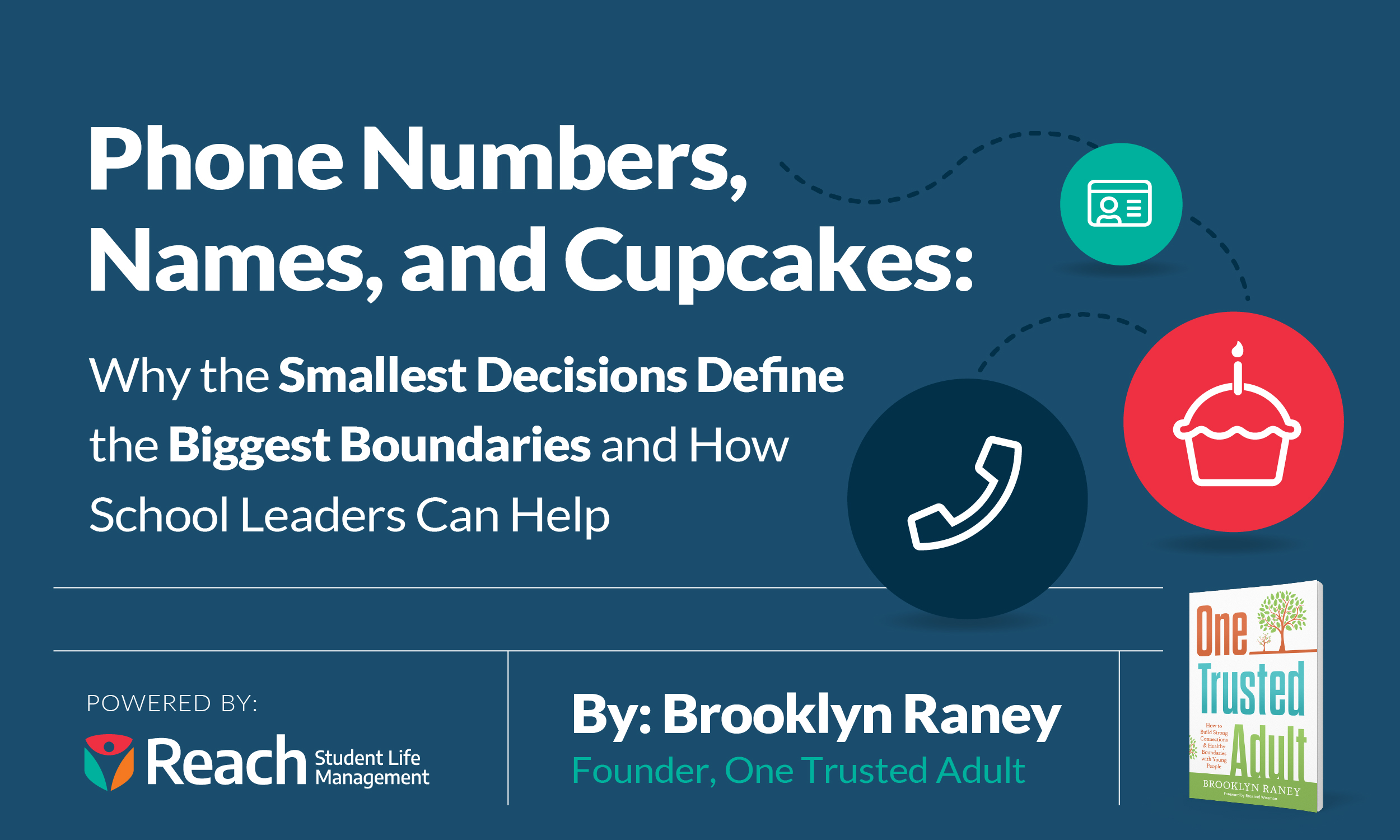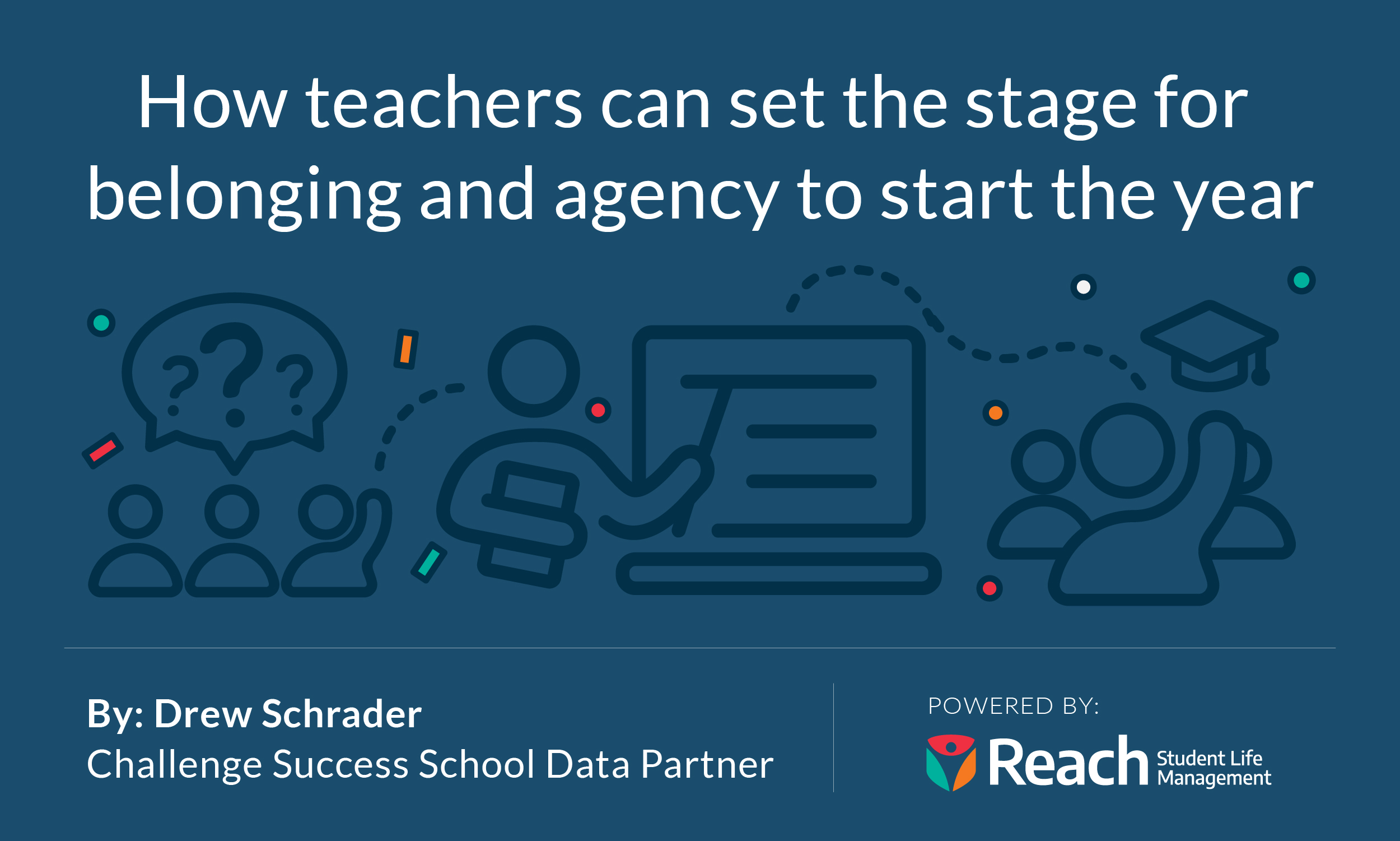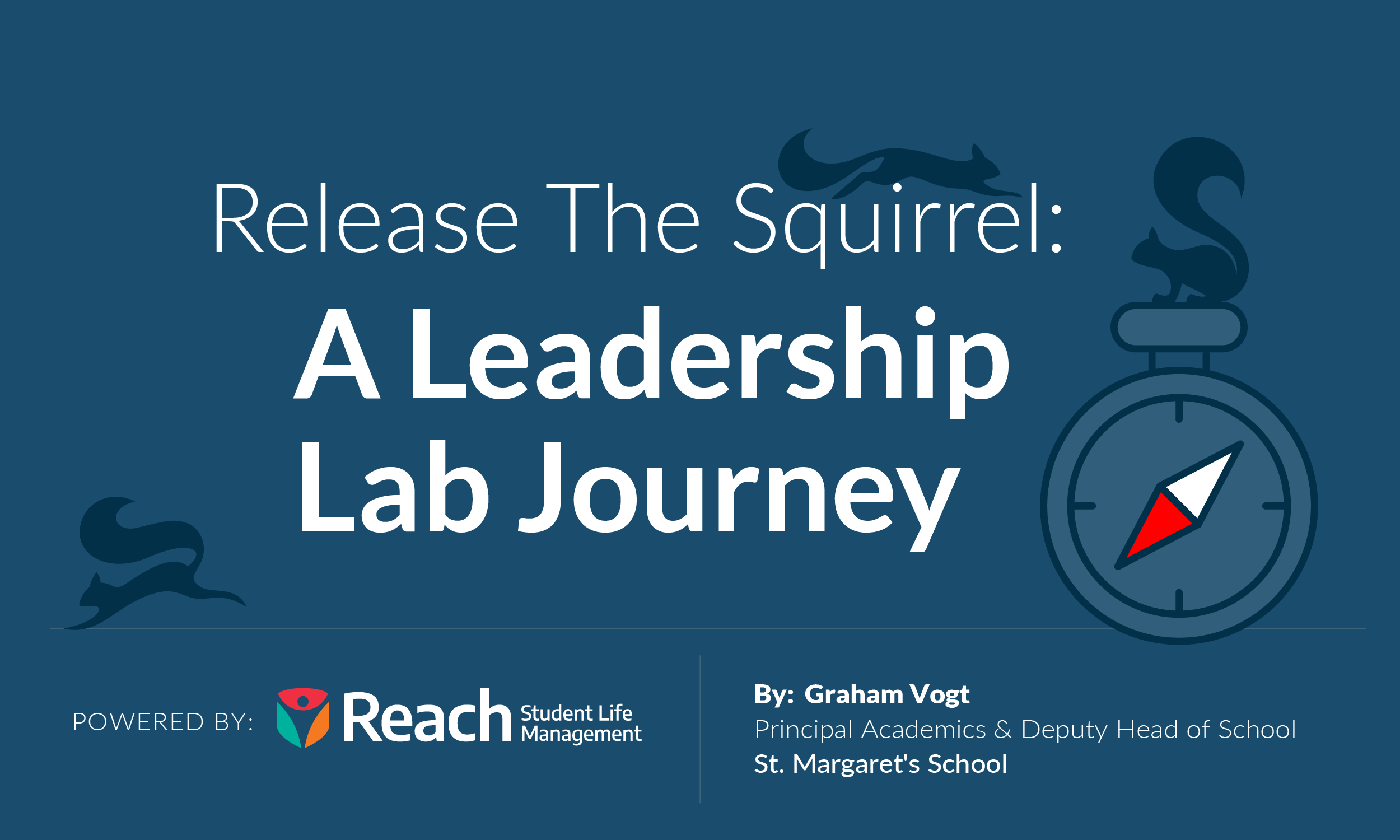By: Sarah Miles and Denise Pope – Challenge Success
Key Points
- Well-being, belonging, and engagement in learning are intrinsically linked.
- The top three drivers of student stress are grades, workload, and lack of sleep.
- Schools can influence some of the protective factors that are proven to make a difference for student well-being in the long-term.

At Challenge Success, we partner with school communities to elevate student voice and implement research-based, equity-centered strategies to improve student well-being, engagement, and belonging. We know from our research and the work of others in the field that these three elements of the student experience are intrinsically linked. Through a series of blogs for the Getting Smart community this summer, we look forward to unpacking well-being, engagement, and belonging with you and diving into what that looks like in the school communities where we have worked over the past 20 years.
How is well-being defined?
Experiencing a sense of well-being is a broad concept that encompasses the physical, economic, emotional, and social aspects of wellness. Even though one’s safety, financial security, and physical health are important factors of well-being, for the purposes of this blog, we focus on the aspects of well-being that can be nurtured in classrooms and schools across departments, disciplines, and activities. In our student survey (also known as the Challenge Success-Stanford Survey of School Experiences) we track several indicators that can help us understand trends in student well-being including sleep, stress, and support. Informed by the data we have collected from our partner schools*, as well as other researchers in the field, we have learned some best practices to support student well-being that we are eager to share with the Getting Smart community.
*Challenge Success survey data referenced in this blog were collected from over 15,000 high school students and 4,000 middle school students across the United States from January-May 2023.
Creating the Conditions for Well-Being in Schools
Reduce Unhealthy Stress
While it is natural for students to experience some level of stress as they are attending to their studies, work, family obligations, and relationships, we hope to avoid chronic stress that has an unhealthy impact on students. In our surveys, we ask students to list their major sources of stress, and the answers are consistently grades/tests, workload, and lack of sleep. These are often good places to start when addressing key levers within the school setting to reduce undue stress.

- Rethink Assessment: Grades, tests, midterms and final exams can be particularly stressful for students who believe the stakes are high and who often don’t know what to expect, how best to prepare, or how to show what they know on time-bound, traditional kinds of assessments. We often work with schools to consider changes to their overall assessment practices to allow for more transparency, scaffolding, and flexibility. For instance, we ask teachers to increase their use of performance-based assessments where students can choose different ways to demonstrate what they’ve learned. Teachers can offer opportunities for ungraded assignments, revision and redemption, and self-assessments. Try letting your students decide which assignments to grade or giving quizzes to check for learning without recording points. There are a whole host of ways to reduce student stress when it comes to grades and assessments, and even small shifts can go a long way in putting students at ease (Schrader, 2023).
- Balance High Expectations with Care: While we don’t want to cause undue stress, we certainly still aim for students to engage deeply with their learning. In the search for the “zone of proximal development” (Vygotsky, 1978) – we want to nudge students past their comfort zone, holding them to high expectations, while offering encouragement, support, and scaffolding to help them reach mastery. Teachers can hold students accountable for completing their schoolwork while also explicitly showing that they believe in their abilities and respect and value them as individuals. Try co-creating expectations and agreements, and reminding students that the goal is to focus on learning and improvement rather than grades. Schools might consider doing away with class rankings and publishing college acceptance lists. This helps to let students know that their inherent value is in who they are, not what they produce and that we believe in their potential (O’Reilly, 2018).
Help Students Get the Sleep They Need
It will come as no surprise to anyone who interacts with young people that they are not getting enough sleep. In fact, although teens need 8-10 hours of sleep per night, 43% of high school students in our surveys are getting less than 6.5 hours per night, and the data is only slightly better for middle schoolers.

Lack of sleep (National Heart, Lung, and Blood Institute, 2022) has profound effects on the human experience and is linked to physical and mental health problems, injuries, reduced learning and focus, and difficulty judging and reacting to other people’s emotions. Children who are sleep deficient might be overly active, have trouble paying attention, and struggle to meet expectations at school.
In our survey, 70% of high schoolers report feeling exhausted in the last month. While as educators we can’t make teens go to bed earlier, there are some ways we can support their rest:
- Reduce Homework: Research shows that middle school and high school students who self-reported higher workloads in school tended to also report more symptoms of exhaustion and lower rates of sleep (Galloway, Conner, & Pope, 2013). As an individual teacher, reducing the amount of homework you assign may be one of the quickest ways to create more time for sleep in your students’ lives. In addition, for students to reap any benefits from homework, they need to see its value and purpose. Ideally, the assignments should be interesting and engaging, and should encourage students to apply their learning as opposed to practice rote skills (Challenge Success, 2020). Finally, consider having homework-free weekends and holiday breaks so that students can truly rest.2
- Host a Sleep Campaign: Of course, students may not necessarily take advantage of this extra homework-free time by going to bed earlier. So we urge educators to pair a reduction in workload with explicit lessons on the value of getting more sleep. Educating students and families on the importance of sleep and the effects of using electronic devices before bedtime can have a big impact on how students prioritize their time outside of school. We find these campaigns to be particularly effective when they are student-led. Download our Sleep Campaign Resources here.
- Start the School Day Later: California was the first state to implement a mandatory later start time (De Leon, 2022) for middle (8 a.m.) and high schools (8:30 a.m.), a change that many other states are now also exploring. While a state-wide mandate is helpful in establishing universal guidelines, districts – and sometimes individual schools – don’t have to wait for a mandate, and should consider the viability of moving the start time later. Even a 30-minute change once or twice a week can have a significant impact for students.
Provide Emotional Support
A great deal of what we naturally do as educators is rooted in caring deeply for our students. We strive to know them, to understand their strengths, and to support their growth. That being said, the past few years have been incredibly difficult for students and educators alike, and we weren’t surprised to see that students are often missing school for health or emotional reasons. In fact, 42% of high school students and 38% of middle school students missed school for a health or emotional reason in the month prior to taking our survey this past winter or spring. Moreover, our data show that most students do not have a high level of confidence in their ability to cope with stress, and many believe their teachers don’t care whether or not they come to school.

In our work, we see relationship-building as the primary way to create a safety net of emotional support around students. While it would be wonderful to increase the number of counselors and other support staff in schools, that isn’t always possible, nor is it wise to infer that counselors alone are the solution. Instead, we encourage all faculty and staff to find ways to connect with students. From small moments of kindness to listening when a student has a personal problem, there are many ways schools can offer students emotional support.
- Make Time for Relationship Building: Scheduling time for advisory, clubs, and other less-structured activities allows teachers to form authentic relationships with students. Several of our partner schools have adopted four-year advisory programs where the advisor stays with the same 15 to 25 students for their entire high school career. Meeting times may vary from advisories that meet daily to those that meet once or twice a week for 15 to 40 minutes, but most have found that the consistency across the weeks and years is really what drives the positive student-teacher and student-student relationships.
- Model and Teach SEL Skills: In the past several years, we have heard from many schools that students need more time to practice social-emotional skills such as understanding their own emotions, identities, values, and goals (Hoffman, et al 2020), regulating their own emotions and behaviors (Gross, 2015), empathizing and feeling compassion for others, and collaborating and communicating effectively with others (Jagers, Rivas-Drake, & Williams, 2019). Many educators are incorporating practices such as mindfulness, movement, and breathing exercises into their classroom routines. We especially appreciate the resources offered by CASEL and IFSEL for concrete lesson plans and tips for helping students learn these vital SEL skills.
Well-being ≠ being happy all (or even most) of the time
Adolescent psychologist, Lisa Damour, Ph.D., emphasizes in her work that one of the ways we can best support teens is by helping them to see that well-being doesn’t mean being in a state of perpetual happiness. Rather, being well is having the resilience to move through a difficult emotion and reflect on it from the other side. We may not be able to shield students from all of the ups and downs of adolescence, but we can certainly take some intentional steps to focus on the protective factors that we know will make a difference for their well-being in the long term. We invite all educators and decision-makers in schools to consider these research-based strategies for improving student well-being in school settings.
Sarah Miles, Ph.D., M.S.W., is the Director of Research at Challenge Success.
Denise Pope, Ph.D., is the Senior Lecturer at the Stanford University Graduate School of Education and Co-Founder/Strategic Advisor at Challenge Success.
__________________
Published on Jun 13, 2023 – https://www.gettingsmart.com/
Guest Author
Getting Smart loves its varied and ranging staff of guest contributors. From edleaders, educators and students to business leaders, tech experts and researchers we are committed to finding diverse voices that highlight the cutting edge of learning.




